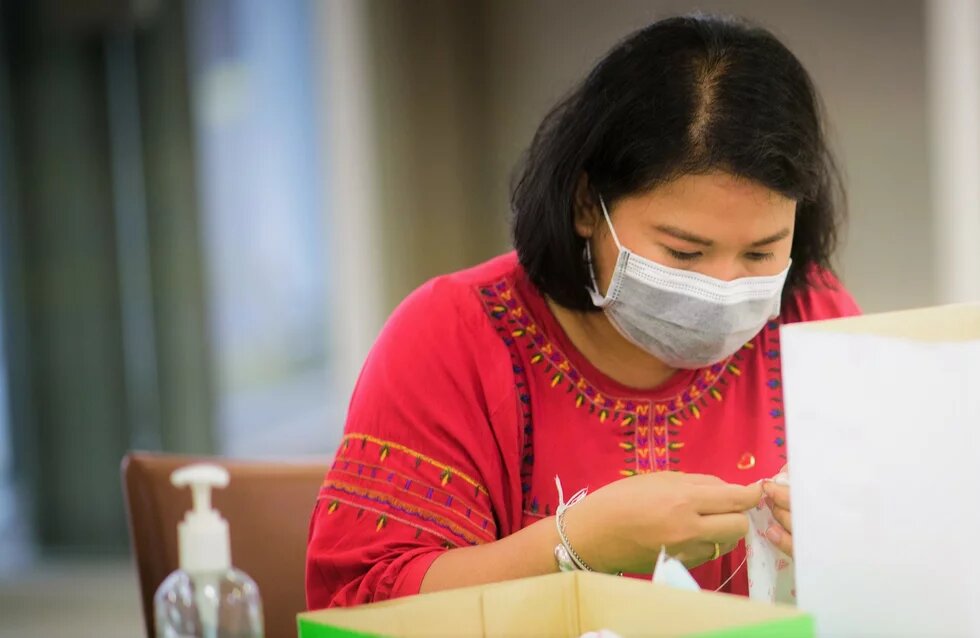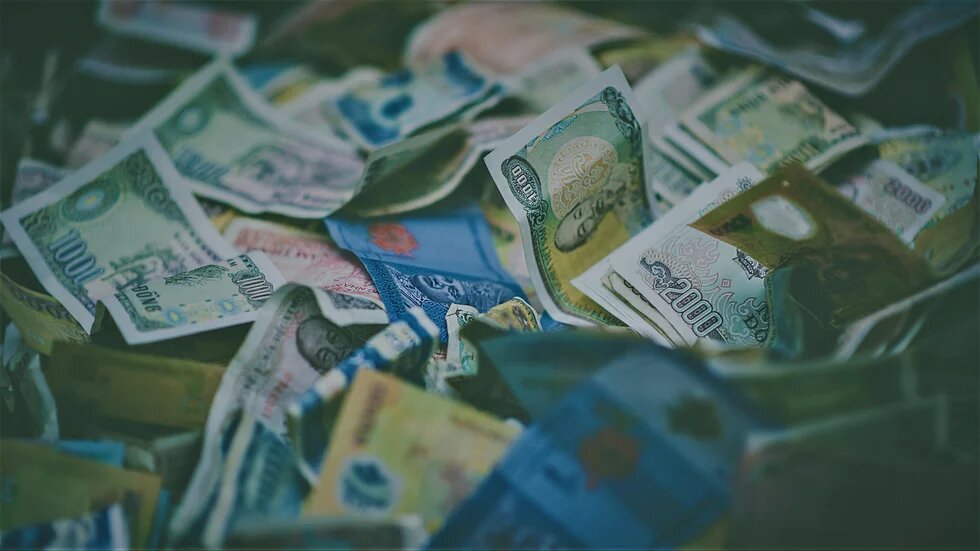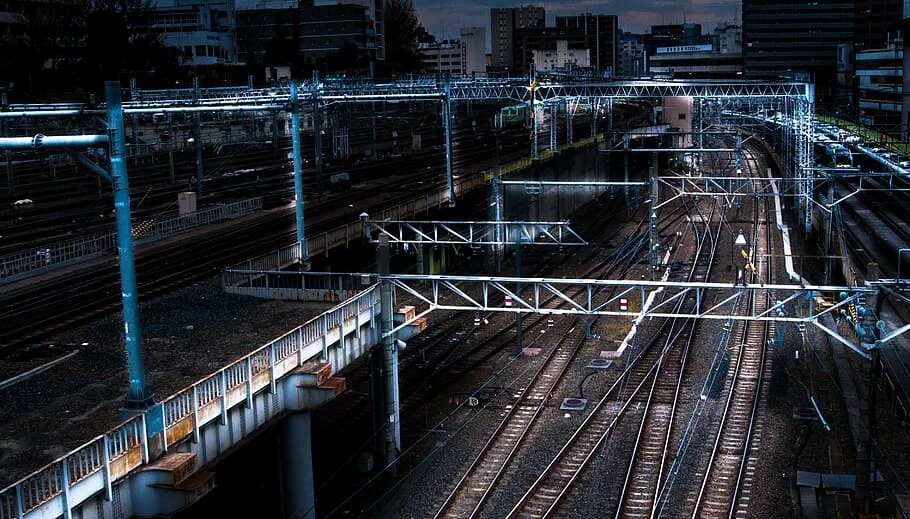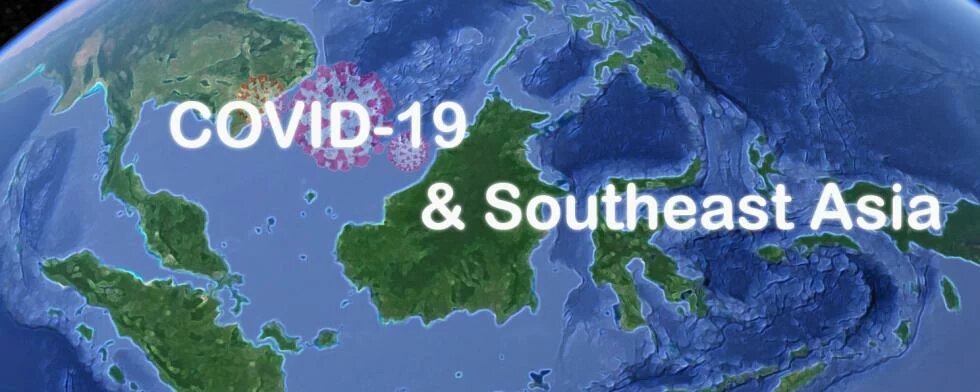
Regardless of where you are placed in the social hierarchy the facts remain the same - as of now there is no cure for COVID-19, our governments were not prepared, the climate crisis is looming and we are all in lockdown. The coronavirus since January 2020 in its wide spread infectious nature has exposed the vulnerabilities of the public health and governance system of every nation be it rich or poor.

The public outcry echoing around the world from panic-stricken hospitals of Italy, New York, Philippines, Bangladesh, were all the same. Doctors and frontline workers were ill equipped and getting infected and dying of COVID-19. Scores and scores of people frantically rushed towards their nearest health care centers, looking for treatment, fearing infection and carrying symptoms. Media reports across Asia mention how doctors and hospitals were at maximum capacity and were forced to refuse incoming patients due to lack of resources, beds and protective gears.
According to the WHO the need for clinical testing and quarantine measures is considered critical to slow the spread of the virus. Asian countries especially lower income countries have fragile and limited health care systems, as a result slowing down the spread would be the only way to stop health care centers from being overwhelmed. Unfortunately with struggling fiscal health, and lack of public health infrastructure Asian governments are opting to use the heavy handed method of police and military crackdowns to enforce quarantine protocols, violating human rights and basic political freedoms. As this article is being written activists and journalists in Pakistan, Bangladesh, Philippines among many others are being persecuted, silenced or jailed for speaking the truth and exposing government failures. Recognizing the importance of the issues above, this article will try to focus on the issue of debt and development finance and its impact on COVID-19 response by lower income and developing countries in Asia.
With the marching orders from WHO to ‘flatten the curve’, governments enforcing lockdowns were now destined to bear the economic brunt of shutting down most manufacturing, industry, consumer markets, agriculture, transport and trade. According to recent reports 85% of the global workforce has been hit by full and partial lockdowns due to this pandemic of which 125 million full time workers are from Asia.
Lack of Economic Diversification
Whether it was due to poor planning or lack of political will; many lower income Asian governments, who had not diversified their economies for decades, have suffered more because of the lockdowns. Governments having been coupled through single export sectors to the global market such as- tourism for Nepal, over seas migrant worker flows for the Philippines, ready-made garments sector for Cambodia, Bangladesh and Vietnam, are in deep crisis for closing of European and US markets and air travel. The lockdowns have led to crippling unemployment and deep losses especially for small firms associated with these sectors to fall into bankruptcy with no lifelines from the state. State bailouts have often targeted the bigger corporations leaving small business owners and their workers behind. This was most evident in the US bailout for the airlines industry in the early March pronouncements by the Trump administration. Thus with the ‘go to’ revenue generators being stalled for lower income Asia, the only option would be to reach out to international development community for grants and loans. It is evident that the current public health crisis compounded by the economic crisis, and global climate crisis has Asian governments frantic and reeling. ‘We were not prepared’ is probably what country leaders are saying to each other in hindsight. Why did we not invest in public health infrastructure? Where can we find quick funds for testing kits? Where are the PPEs? We cannot afford an indefinite lockdown, what are we going to do? What are we going to do?
Truly this crisis has caught lower income Asia off guard.
The Fourth Wave of Debt
Ayhan Kose (et.al 2020) identifies waves of debt accumulation have been a recurrent feature of the global economy over the past fifty years. The first wave of debt came in the form of the Latin American debt crisis of the 1970s, the second wave was the 1997 Asian Financial crisis, and the third wave of debt was during the Global Financial crisis of 2008. It is being estimated that the fourth wave of debt began in 2010 and as of 2019 September the global debt stands at a staggering 263 trillion USD. The authors recognized a positive correlation between high debt and financial crisis, which has proven true for all three of the preceding waves of debt. This fourth wave of debt is being considered by the IMF and the World Bank as the most severe and widespread of the previous three. As the global economy continues to contract with extended lockdowns, a financial crisis maybe fast approaching gaining momentum everyday.
The global debt of 263 trillion USD boils down to a 32,500 USD debt burden of each individual for all 7.5 billion people inhabiting planet earth. Being in Asia it begs to be mentioned that 32,500 USD individual debt hits you quite differently based on where your livelihood is located (for ex: a construction worker, teacher, or a CEO). The depreciation of local currencies, stagnation of wages for the working class, the rising prices of housing, health care are leading to ‘gig’ work in the form of multiple jobs in pitiful conditions to make ends meet. The unending working hours and poor living conditions are putting working people further at risk to getting infected by the virus. Thus high paid CEOs and global celebrities on social media posting lockdown chronicles fail to reflect the telling signs of disaggregated impact of the global debt and lockdown on the working people. There is unfortunately never a good time to be hit by a pandemic and this is possibly the worst of times from a global historical debt perspective.
Billions to Trillions in Infrastructure Loans
According to the IMF the debt was triggered because of low interest rates and loose financial conditions over the past decade. 2010 global finance was heralding the mega infrastructure asset class boom, and the prescriptions were spearheaded by the World Bank’s former president Jim Kim announcing the Billions to Trillions agenda in Korea, 2017. China announced its 2013 Belt Road Initiative, and the former ADB President Nakao in the 2015 ADB Annual Governors Meeting in Baku announced the 27 trillion USD gap in infrastructure in Asia. The Asian governments lapped it all up, as the loans were plenty and fluid. Modalities such as public private partnership, infrastructure equity funds, special purpose vehicles and blended finance became buzzwords for new forms of loans inciting private investment into mega infrastructure. There were also new loan sources included various new lenders outside the Bretton Woods and the Paris club, this included a wave of Japanese, Korean and Chinese quick money lending with low restrictions flooding the market. As a result Asian governments have accrued large amounts of foreign debt, which could only be sustained through rolling economic activity and regular debt servicing payments. No one could predict in 2019 that a global pandemic would bring global economy to a halt, and immediate loan repayments would be life threatening for lower income countries in 2020. The sheer size of the loans and the rising cost of debt maybe one of the contributing factors for governments like India and Bangladesh flirting with reviving the garments sector, and issuing statements indicating early easing of quarantines and removing lockdowns at the real risk of coronavirus flare up/ second wave.
Structural Weaknesses of State Financial Systems
‘We were not prepared’ that haunting sentiment will continue to keep repeating within Asian government officials offices, and it should make them reflect of the structural weaknesses which they have neglected to reform over the past decades. Endemic corruption in the Philippines, India, Afghanistan, Bangladesh, Laos, were found to be the breeding ground for state emergency response failures. Lack of coordination between municipalities and central governments, with supply chain bottlenecks due to corruption, had not been rectified, all contributed to the stark failure in ensuring critical services and information to reach local people. It needs to be highlighted that these systemic challenges pre-existed the COVID-19 pandemic for most of these countries.
According to the recent World Bank report on debt the following structural weaknesses of state financial systems have been further identified - poor revenue collection, widespread tax evasion by big corporations, monetary financing of fiscal deficits using international loans, corruption in food warehouses and stockpiling, and populist policies to subsidize sectors like fossil fuel energy most often in the grips of politically embedded private sector enterprises. The issues cited above resonate strongly for South Asia and South East Asia, where there is high inequality and mass agrarian communities.
As the loans started pouring into these weak financial systems it manifested bubbles of wealth inequalities. As a result the evident neglect in Asia’s development narrative were public health services, education, water and sanitation, food security and basic social safety nets on wages and pensions. Clearly the pandemic induced ‘hunger’ uprisings are symptomatic of the decades of mismanagement, false development strategies, undermining the poor and the intended promotion of systemic corruption through the state-private capital system.
Currency Depreciation
Going back to international development loans, it needs to be mentioned that most Asian countries have opted to borrow in hard foreign currencies especially the USD and the Euro from the ADB, World Bank, AIIB and bilateral banks such as JICA, JBIC, CDB and others. As the economies are forced to contract due to the lockdowns the debt service obligations are now facing steep currency depreciations. The currency crisis is exacerbating everyday, and with falling prices of fossil fuels this will further deepen the stake into the economy. The state response will be a rise in inflation, and increase of local currency in the money supply, with a dry foreign reserve the potential for a defaulting economy is very very high. Consequently, the AIIB in a recent report on Asia’s infrastructure outlook cited that foreign currency loans in themselves are attractive and end up as a key issue for stalled projects. Poorer economies tended to hold onto hard currencies and not roll out infrastructure project investments to ensure build up of foreign currency reserves. This often delays the inevitable, as this measure to strengthen local currency is often short term, and continues to accrue interest in loan payments in the long run without any movement in spending in the real economy.
This line of the argument tends to promote the idea that lower income countries in times of economic strain (with low foreign reserves and rising inflation) sometimes tend to also augment fiscal deficits with international development project loans. In other words big dollar loans are used by lower income countries to address national budget shortfalls, this often leads to balance sheet mismatches, over invoicing of procurements, which further lead to stranded assets and short term wealth bubbles. All of which are often untracked due to weak banking regulations and poor monitoring frameworks
Public Risk in Mega Infrastructure Financing
The mega infrastructure solution has not yielded the desired economic returns and had furthered environmental and social destruction in Asia. Civil society movements globally have argued over base load energy investments on coal, big hydro and fossil fuel, leading to deepening corruption, rising climate risk and widening debt GDP ratios. Over the last decade the MDBs have focused on private sector led project financing, which often had commercial goals over development goals, this is quite telling of ADBs new Strategy 2030 which has a committed chapter for unlocking private capital in infrastructure investment.
Thus what we see in terms of project financing selection is commercial priority given to gas pipelines in Azerbaijan, export-processing zones in Myanmar, and massive investments in trans boundary connectivity road projects in Central Asia and South Asia. What is left often undermined is the small-scale road project linking the village to the hospital as it is deemed as a ‘non-bankable’ investment. COVID-19 has exposed the dire need for a long-term plan for public health infrastructure, unfortunately with abundance of credit lines over the past decades there were no meaningful investments made in this sector.
Click here to go to Part two of this article
__
*Rayyan Hassan is the Executive Director of the NGO Forum on ADB
This article is published by Heinrich-Böll-Stiftung Southeast Asia and NGO Forum on ADB
The NGO Forum on ADB is a network of civil society organizations (CSOs) that has been monitoring the projects, programs, and policies of the Asian Development Bank (ADB) and the Asian Infrastructure Investment Bank (AIIB) with membership spans Asia and the Pacific regions.
This article is a part of Web-Dossier: COVID-19 and Southeast Asia



